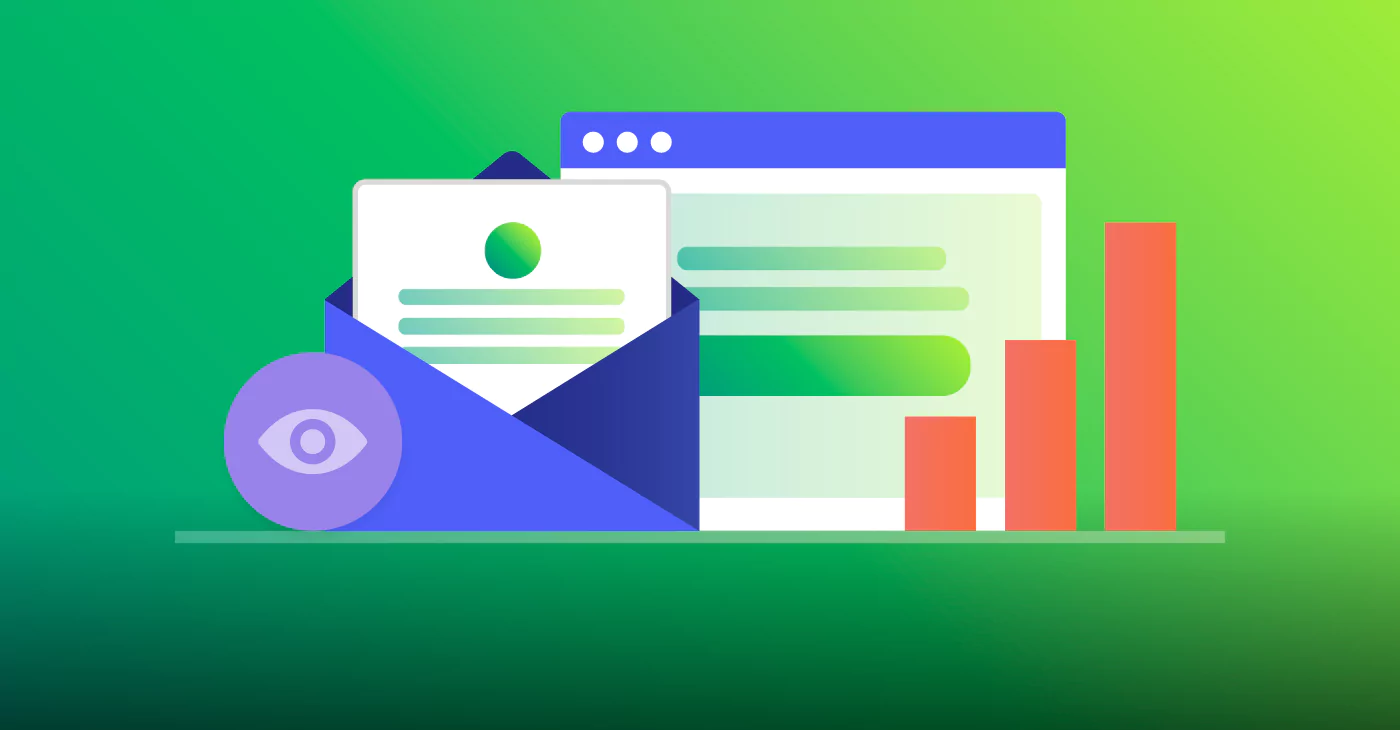The Power of AI-Generated Email Design and How It’s Revolutionizing Email Marketing
November 15, 2023 7 min read

While email marketing has proven to be a robust and effective tool for engaging customers and driving conversions, it is not immune to the winds of change that sweep through the digital realm. Enter Artificial Intelligence (AI), a disruptive force that is ushering in a new era of email marketing. At the heart of this transformation lies AI-generated email design, a cutting-edge technology that is revolutionizing the way marketers connect with their audiences.
The world of AI-generated email design is fascinating and has profound implications for email marketing professionals. Gone are the days when crafting visually appealing and personalized emails was a labor-intensive process. With AI as their creative ally, email marketers now have a powerful tool at their disposal, one that can generate stunning email designs, tailor content for individual preferences, and optimize engagement strategies—all at an unprecedented speed and scale.
As we delve into the depths of this digital revolution, we will explore the key drivers behind AI-generated email design’s rise to prominence, dissect the mechanics that power this transformative technology, and uncover the tangible benefits it brings to the email marketing landscape. From heightened personalization to dynamic content adaptation, AI is not only streamlining the creative process but also amplifying the impact of email campaigns.
What is AI-Generated Email Design?
AI-generated email design refers to the use of artificial intelligence (AI) technologies to automate and enhance the process of creating visually appealing and effective email marketing campaigns. This innovative approach leverages AI algorithms and machine learning techniques to assist email marketers in designing and personalizing email content, layouts, and visuals, ultimately improving the performance and engagement of email campaigns.
The Drivers Behind the Rise of AI
The rise of AI-generated email design can be attributed to several key drivers, each playing a crucial role in its growing prominence within the field of email marketing:
- Personalization Demands: Consumers today expect personalized experiences. AI-driven email design allows marketers to create highly personalized content that caters to individual preferences, behaviors, and demographics. This level of personalization increases engagement and conversion rates, making it a powerful driver for its adoption.
- Big Data and Analytics: The availability of vast amounts of customer data and the advancements in data analytics have made it challenging for marketers to process and derive insights from this data manually. AI can sift through this data quickly, identifying trends, patterns, and opportunities that would be difficult or impossible for humans to discern.
- Efficiency and Scale: AI can automate time-consuming and repetitive tasks involved in email marketing, such as content creation, A/B testing, and list segmentation. This efficiency allows marketers to scale their efforts and run more effective campaigns without substantially increasing their workload.
- Improved Customer Experience: AI-generated email design enhances the customer experience by delivering content that is more relevant and engaging. This, in turn, leads to increased customer satisfaction and loyalty, as well as improved brand perception.
- Optimization and Testing: AI can continuously optimize email campaigns by testing various elements, such as subject lines, content variations, and send times, to determine what works best for different audience segments. This data-driven approach results in better-performing campaigns.
- Responsive Design: With the proliferation of mobile devices, responsive email design has become crucial. AI ensures that emails are automatically optimized for various screen sizes and devices, providing a seamless experience to recipients.
- Predictive Insights: AI can provide predictive insights into customer behavior, helping marketers anticipate and meet customer needs. For example, it can predict when a customer is likely to make a purchase based on their previous behavior, enabling timely and relevant email communication.
- Competitive Advantage: As AI-generated email design becomes more prevalent, early adopters gain a competitive advantage. Marketers who harness the power of AI can deliver more effective campaigns and stay ahead of competitors who rely on traditional, manual methods.
- Cost Efficiency: While AI implementation requires an initial investment, it can ultimately lead to cost savings by automating tasks that would otherwise require significant human resources. This makes AI an attractive option for businesses looking to maximize ROI in their email marketing efforts.
- Regulatory Compliance: The increasing focus on data privacy and regulations like GDPR has made it essential for marketers to ensure compliance in their email marketing efforts. AI can assist in managing and segmenting data to meet these regulatory requirements.
All of the points mentioned above helped drive the need for AI-generated email design, but what are the mechanics that drive AI-generation, and how does it work?
How AI-Generated Email Design Works
The mechanics that power AI-generated email design involve a combination of various artificial intelligence techniques, algorithms, and processes. These mechanisms work together to automate and optimize different aspects of email design and content creation. Here are the key mechanics that enable AI-generated email design:
1. Natural Language Processing (NLP)
- Text Generation: NLP algorithms are used to generate personalized email content, including subject lines, body text, and calls to action. These algorithms analyze large datasets to understand language patterns and generate human-like text that resonates with the audience.
2. Machine Learning (ML)
- Predictive Analytics: Machine learning models can predict user behavior, such as open rates, click-through rates, and conversion rates, based on historical data. This helps marketers send emails at optimal times and tailor content for specific segments.
- Segmentation: ML algorithms can automatically segment email lists based on various criteria, such as demographics, purchase history, or engagement levels, ensuring that each email reaches the most relevant audience.
3. Image Recognition
AI can analyze images and suggest or generate alt text descriptions for images used in emails. This enhances accessibility for recipients with disabilities and improves SEO for email content.
4. Generative Adversarial Networks (GANs)
GANs can generate visual elements for email designs, such as images, graphics, or illustrations. They consist of two neural networks, one that generates content and another that evaluates and improves it, resulting in high-quality visual assets.
5. Deep Learning and Neural Networks
Deep learning models, including neural networks, can analyze historical email campaign data to identify patterns and trends, enabling marketers to make data-driven decisions in email design and content creation.
6. A/B Testing Algorithms
AI-powered A/B testing algorithms can continually optimize email campaigns by experimenting with variations of subject lines, content, images, and other elements. These algorithms determine which elements lead to better engagement and conversions.
7. Natural Language Generation (NLG)
NLG technology can create dynamic and personalized email content by pulling information from databases or real-time sources, ensuring that each recipient receives relevant and up-to-date information.
Try Benchmark Email’s Smart Content, powered by OpenAI. It generates engaging email content for you. Sign up for a free plan and try it today.
8. Responsive Design Automation
AI algorithms can automatically adapt email layouts and designs to ensure they are responsive and visually appealing on various devices and screen sizes.
9. Content Recommendation Engines
AI-driven recommendation engines analyze customer behavior and preferences to suggest relevant products, services, or content within emails, increasing the likelihood of conversions.
10. Data Analytics and Insights
AI-powered analytics tools process vast amounts of data from email campaigns, providing marketers with actionable insights, such as customer engagement patterns, best-performing content elements, and areas for improvement.
11. Data Integration
AI can integrate with customer relationship management (CRM) systems, eCommerce platforms, and other data sources to gather relevant customer information and provide a holistic view of each recipient for personalization.
In practice, these mechanics often work in tandem to streamline email marketing processes, enhance personalization, optimize campaigns, and ultimately improve the effectiveness of email marketing efforts. AI-generated email design is a dynamic field that continues to evolve as AI technologies advance, providing marketers with increasingly powerful tools to engage their audiences.
Why AI-Generated Email Design is Beneficial
AI-generated email design offers several significant benefits for marketers. Firstly, it dramatically enhances personalization. By analyzing vast datasets and user behaviors, AI can craft highly tailored email content and designs, ensuring that each recipient receives messages relevant to their interests and preferences. This level of personalization fosters stronger connections with customers and increases engagement rates.
Secondly, AI-driven email design saves marketers time and effort. It automates many labor-intensive tasks, such as content generation, A/B testing, and list segmentation, allowing marketing teams to focus on strategy and creativity rather than manual execution. This efficiency leads to quicker campaign deployment and potentially higher ROI.
Moreover, AI constantly optimizes email campaigns by analyzing performance data and making real-time adjustments. This ensures that marketers are delivering the most effective content to their audience, increasing the chances of conversions. Additionally, AI can predict customer behavior, helping marketers send emails at the most opportune times.
Furthermore, AI-generated emails can adapt to various devices and screen sizes, ensuring a seamless user experience. This is especially crucial in an era where mobile usage is prevalent.
Benchmark Email’s Smart Design
At Benchmark Email, we understand the importance of simple email creation. That’s why we harnessed the power of AI to create our Smart Design feature. Smart Design allows our users to build custom, branded emails with minimal effort. While email templates can be a huge benefit, some of them can come across as generic or cookie-cutter. Smart Design ensures your emails are unique and branded without spending tons of time putting them together.
Sign up for a free Benchmark Email plan and take advantage of this amazing design feature today.





